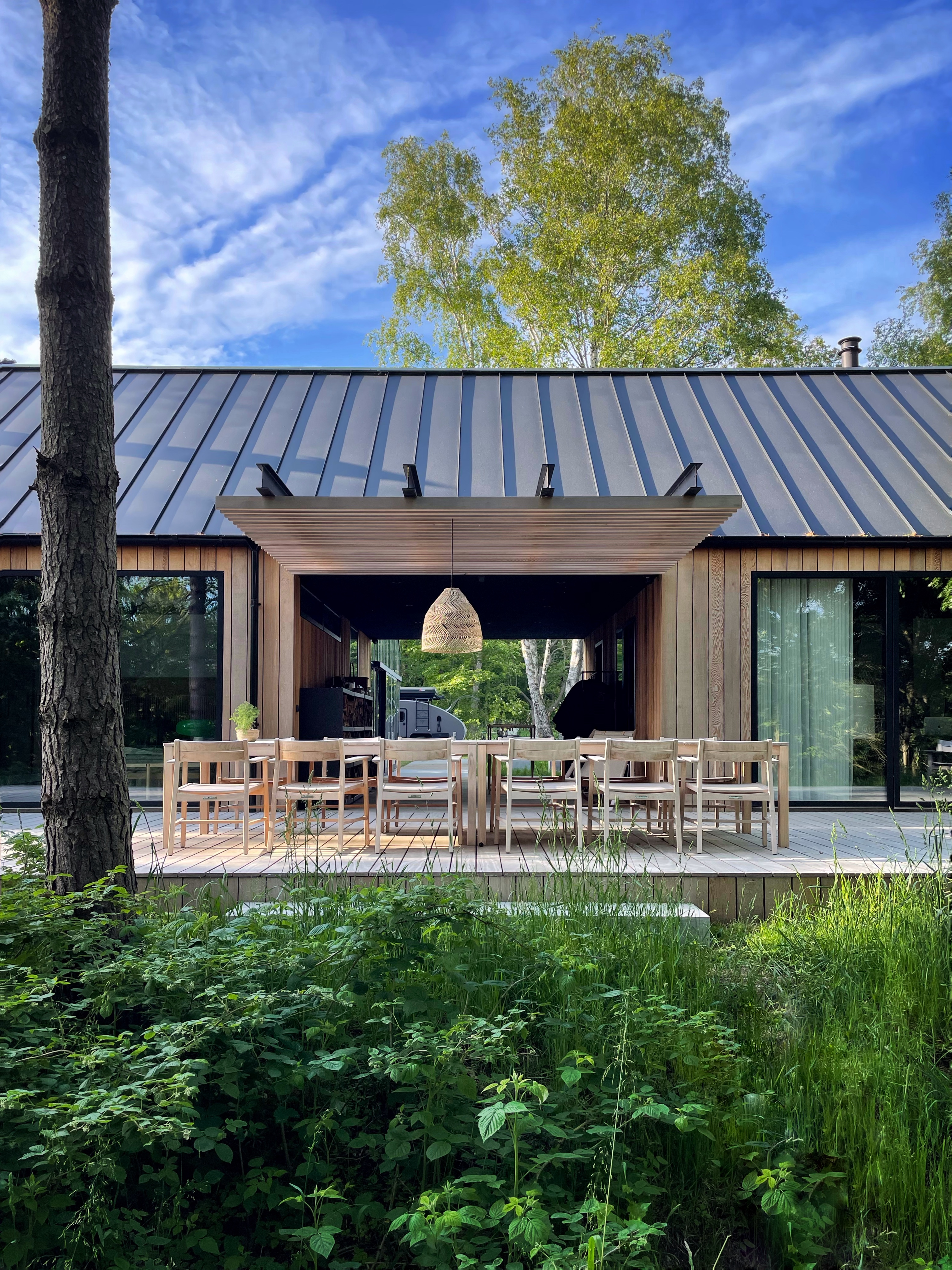Western Red Cedar and the Benefits of Biophilic Design
A NOTE ABOUT FINISHING WOOD
To maximize the biophilic effect of wood it’s ideal to maintain the rich beauty of western red cedar’s natural color versus finishing with an opaque coating such as solid stain or paint. This natural color can be enhanced or modified by applying any number of commercial finishes such as transparent or semi-transparent stains. If left in its natural state, some darkening or graying of the wood can be expected as it ages and the color variation will become less pronounced. Western red cedar is pitch and resin-free, so it takes stains and oils very well. What’s more, there are some stunning new ways to finish western red cedar now on the market. Products like bleaching stains and weathering products create the gorgeous silvery gray look of aged cedar and provide water repellency.
Exterior Finishes
Transparent and semi-transparent stains let the incredible natural luster of the wood shine through and highlight the grain. Sometimes referred to as water-repellant preservatives, transparent stains do not alter the appearance of the cedar because they only slightly modify the color (tone) of the wood. Transparent stains are similar in composition to semi-transparent stains, but they contain fewer or no pigments. Solvent-borne semi-transparent stains contain pigments that provide color, including cedar tones, and greatly increase the durability of the finish by partially protecting the cedar surface from the damaging effects of the sun’s ultraviolet rays.
Interior Finishes
For interior cedar applications, most homeowners simply want to retain and enhance the wood’s natural appearance. This is best achieved using transparent finishes such as waxes, Danish oils, non-yellowing plastic, and other clear finishes that provide some protection to the cedar from minor abrasion and liquids. Western red cedar used indoors can also be coated with a variety of finishes such as bleach, oils, semi-transparent and solid body stains, and opaque finishes but as we noted with exterior finishes, the latter two will hide the natural wood color.

Photo courtesy of Bruno Jakobsen, Jakob Lerche
Nordic Barn. Architect: Bruno Jakobsen Design
Interior Applications
Wood and other elements of nature can be incorporated into any type of residential, commercial, or institutional project to bring nature indoors and promote well-being, reduce stress, and improve mental health for occupants. An increasing number of architects and their clients are starting to appreciate cedar’s stunning appearance and ability to beautify interior spaces. Western red cedar introduces warm, natural beauty into interiors and will last the lifetime of the building if cared for properly. Bringing cedar inside is the best way to add visual appeal and create a greater connection to nature. There are myriad interior uses, from ceilings and soffits to features walls, wood paneling, exposed posts and beams, louvers, furniture, and cabinets.
As for ceilings and soffits, western red cedar paneling is a showstopper that works well in both contemporary and traditional homes, especially when it’s fanned out in a natural range of colors. Cedar beams with a hint of wrought iron can infuse an urban edge, while cedar soffits can carry from the exterior to the interior for a look that connects the indoors to the outside. Whether it’s just one dramatic feature wall in a strikingly modern setting or an entire room with rustic charm, tongue-and-groove paneling, feature walls, and room dividers will elevate the beauty and vivacity of the space. Like all cedar products, tongue-and-groove is incredibly versatile. For example, you can specify tongue-and-groove paneling with a rough face for a more textured look or smooth face for a more polished look. The pieces can be joined with V-shaped, flush, reveal, or radial joinery, and the desired shadowing effect can be achieved by combining one of these joinery techniques with select surface textures.










